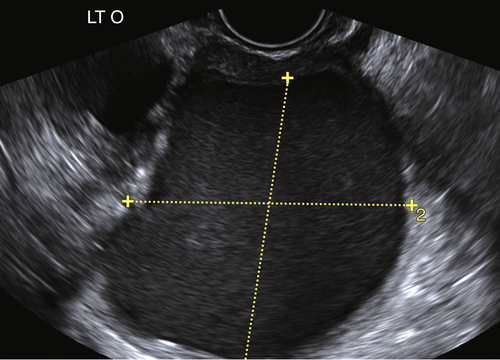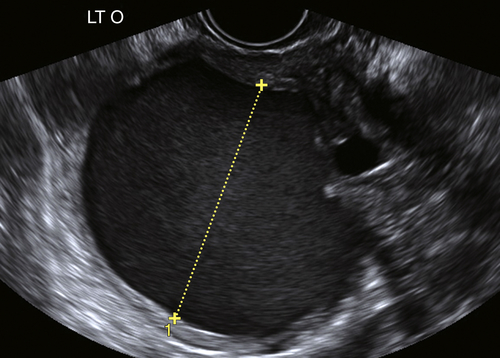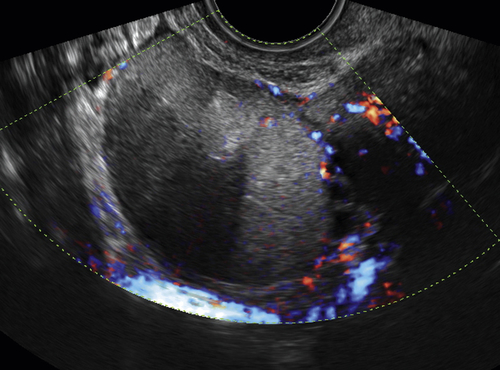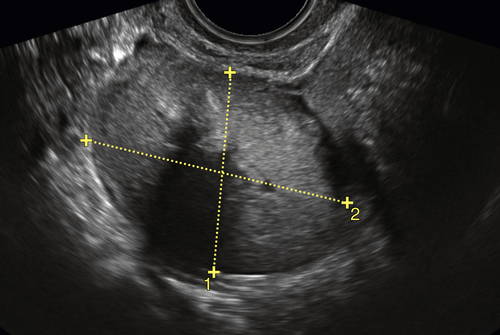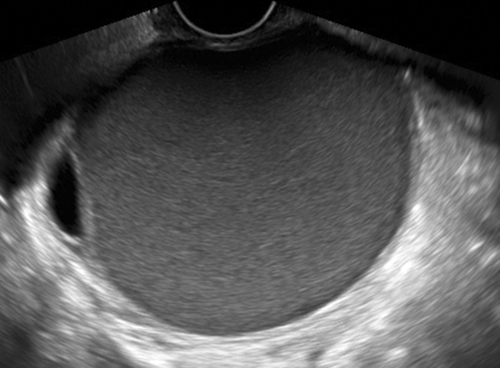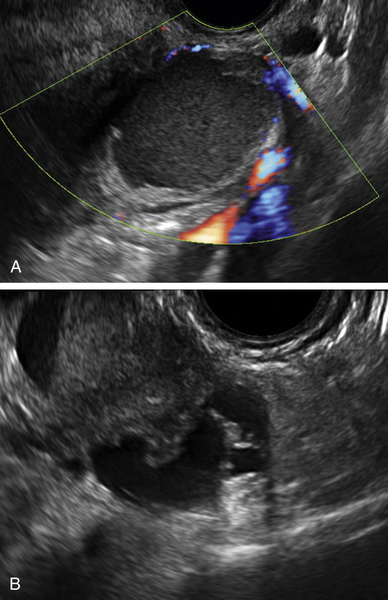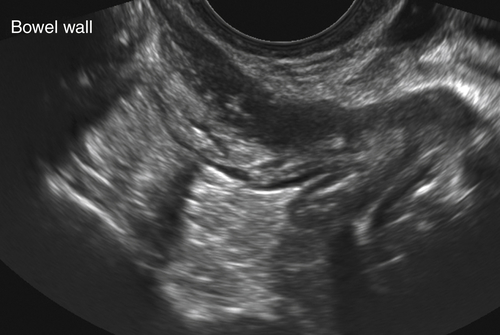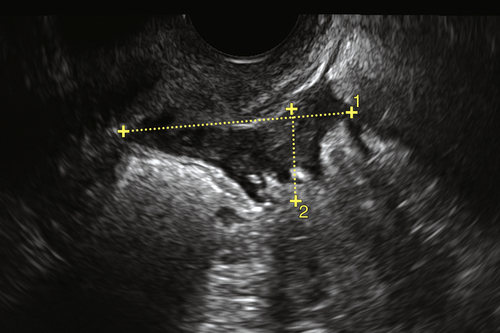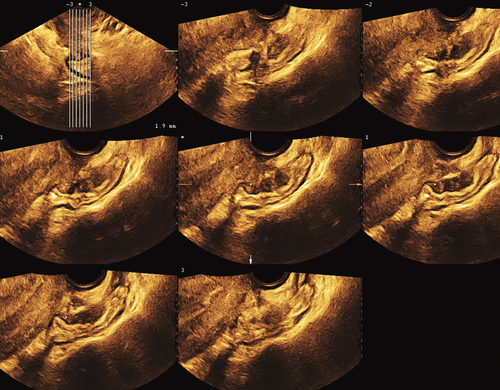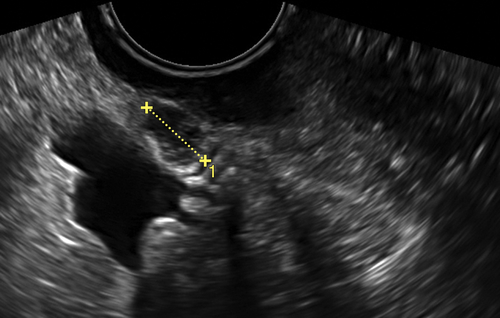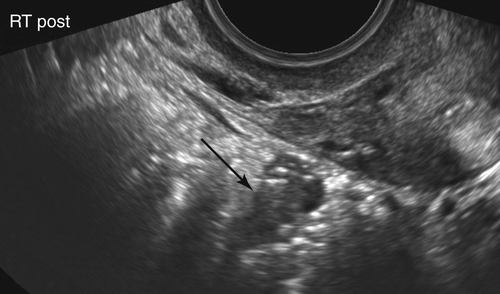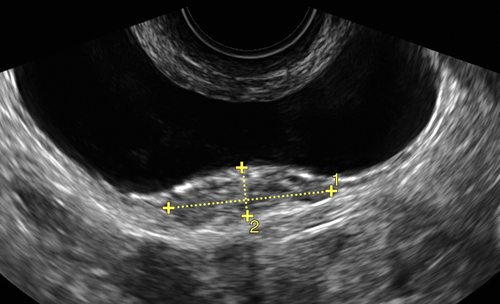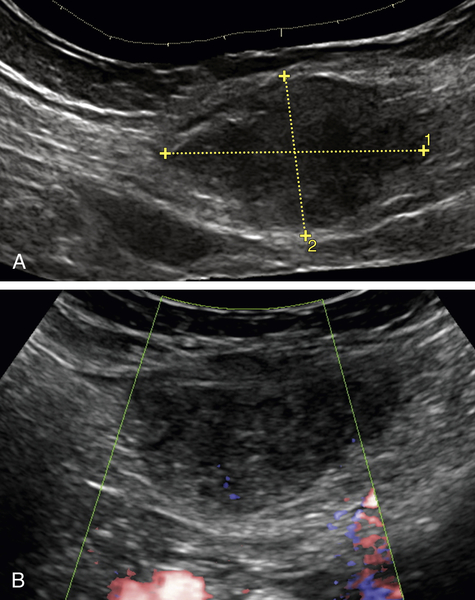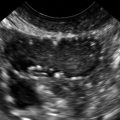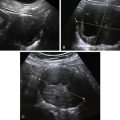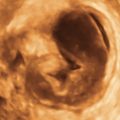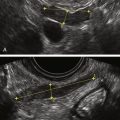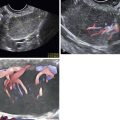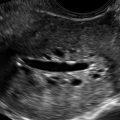Endometriosis
Synonyms/Description
Etiology
Ultrasound Findings
Endometrioma
Decidualized Endometrioma
Deep Penetrating Bowel Wall and Pelvic Implants
Bladder Wall, Ureter, and Anterior Abdominal Wall Lesions (Also See Bladder Masses)
Differential Diagnosis
Endometrioma
Deep Penetrating Bowel Wall and Pelvic Implants
Bladder Wall Lesions
Clinical Aspects and Recommendations
Figures
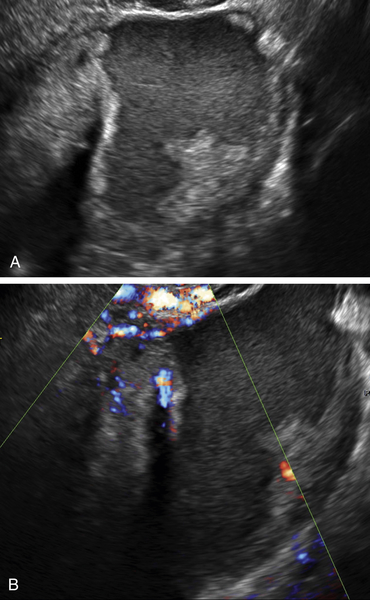
Figure E4-5 A, Cystic mass in a pregnant patient showing an irregular and nodular inner wall with cystic contents displaying low-level echoes. B, Image showing blood flow in the solid areas, a finding that is worrisome for a malignancy. This mass was proved to be a decidualized endometrioma at surgery.
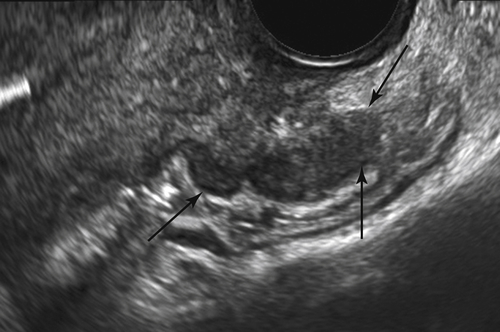
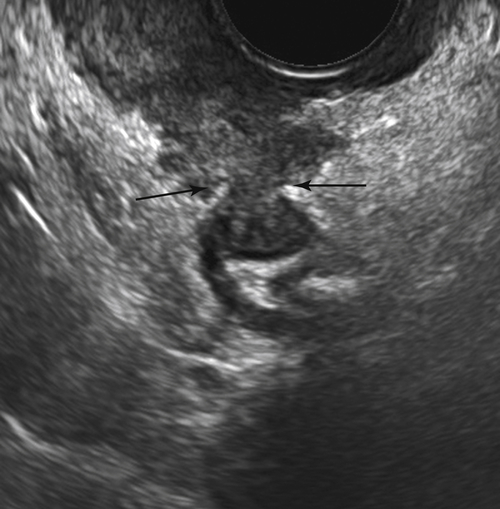
Figure E4-6 Transverse and longitudinal views of the anterior wall of the rectosigmoid, showing solid nodular masses compressing the lumen (arrows). These are typical of endometriotic implants in the bowel wall. Note that the involved bowel is adjacent to the back of the cervix and posterior fornix of the vagina.

